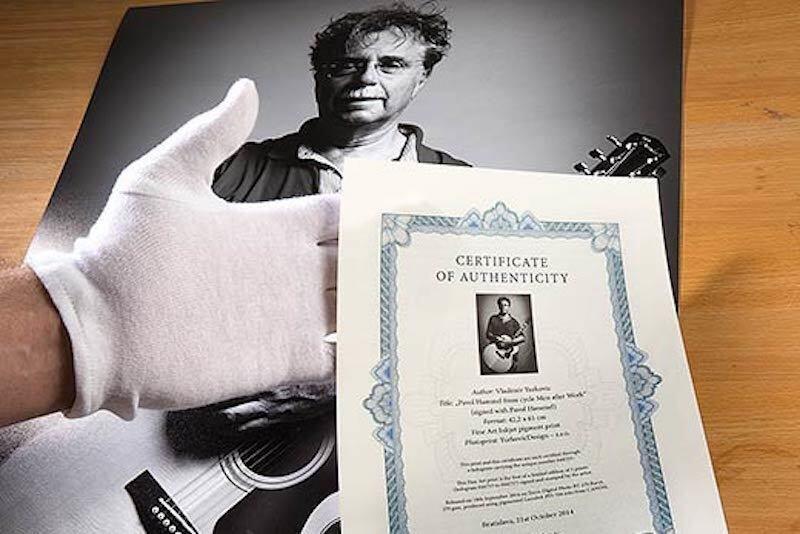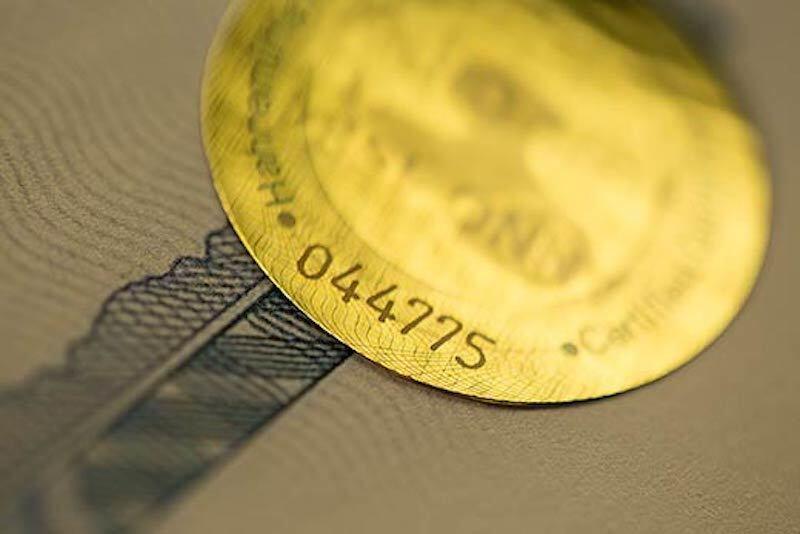Why does an artwork should have the certificate of authenticity?
…because everyone want’s an original
In general, one of the most important aspects of art is its originality. In case of drawing and painting on canvas there are usually no doubts about its originality, with a few exceptions. It is simply given “by production technology” of artwork, except pads and colors, that it is an exclusive product of the author. The greatest adversary of originality, thus indeed protection of investments into art, is multiplicated production (multiplication) of an artwork. This also affects graphic works that are made by semi-industrial technologies, for example – lithography, etching, linocut, serigraphy (silkscreen) etc. There is bond between them – for production (print, fingerprint) of artwork is needed pad – matrix, from which individual pieces are printed.
Go and multiply… thus printing!
Already word press is in direct conflict with the originality of artwork, since it was invented for the purpose of simple multiplication. This fact is solved within the meaning of authorship and security of originality, so that only a limited amount of copies can be printed This creates a closed series of artworks of the same type, where each piece has its own individual serial number in the series. It characterized by each part next to the signature of the author and is a very important parameter, ultimately for pricing. The matrix from which artworks was printed, is finally destroyed after printing. Lithographic stone is grinded and is used again for the next printing, serigraphic sieve will be etched with new motif. A similar system was also developed in photographic enlargements. After the enlargement and agreed numbering of the final series of photographs, the material substrate, the very essence of Photo – the negative – was ritually destroyed before witnesses. It was shredded. Up to this point, it was relatively easy and stray so easy that even multiply artworks have broken into the galleries and auctions. Which means that not only classical works has become negotiable.
Pigment printing
Gradually, with the development of the whole society, the digitalization hit into the art. Artists have always been among the first ones who have reached to the limit of technology and opened new horizons of its usability. Of course some problems have occured. No one knew at the beginning to predict for how long will the felt pens cartoon withstand, or how long will output from the copier or photolab withstand, because the art have adopted this media too. Here, of course on base of demand was found solutions and today you can routinely procure felt pens, which behave like a brush, and most important, the footprint on the paper forms the pigment (solid microscopic particles of the dye) and not unstable color diluted in water or alcohol. Commercially available paper having a neutral pH. Benefication with the proportion of cotton…
The solution is a hologram
Task of Certification is therefore to ensure the authenticity of original graphic and photographic artworks which come from easy to copy digital environment. Certification of an artwork is a combination of unique ideas and of an unique format, guaranteed exact number of pieces and on the specific substrate (paper, baryta paper, canvas etc.). The uniqueness and thus the marketability of the artwork is achieved with certificate, which is an integral part of the artwork and contains all the relevant information about that art piece. The principle of safety is that the artwork and the certificate form a pair and bears holographic sticker with the same unique code number. That is a very similar principle how now manufacturers of luxury goods different from cheap copies. When selling an artworks, obtained new owner in addition to an artwork and certificate of authenticity, where the author and producer of original artwork declares the origin and guarantees a limited number of pieces.
The condition is longevity
Now readily available solutions for artists, that are moving in new waters and create their works with ones and zeroes. No matter whether it is an artwork created by a computer or taken with their digital camera. It is an accepted fact that the galleries are also owners of artwork collections, which are produced by the techniques: inkjet digital print or better pigment print. The pigment printing is characterized, in contrast to aqueous solutions (dye based), in particular a high color stability, depending on the substrate, up to 200 years. For quality washers (pH neutral, no chemicals) and a reasonable location of works can also be achieved substantially higher durability of the work. In the case of photographs as works of art, it’s a great result, because even the oldest enlargements, or contacts from large negatives are still just over 100 years.



